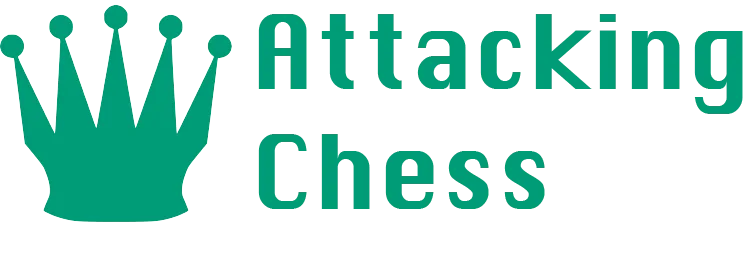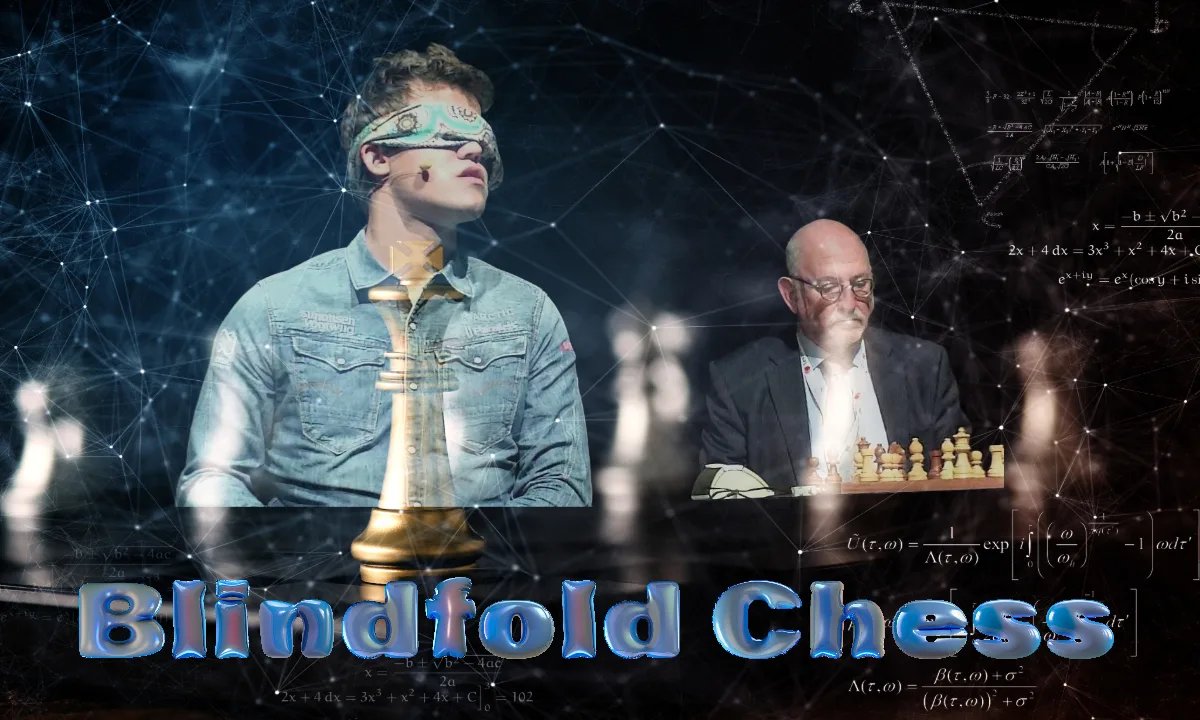If regular chess is the ultimate mental workout, blindfold chess is running a marathon while juggling flaming torches. It’s a mind-bending feat where players play without looking at the board. Yes, you read that right—no physical board, no pieces. Just the vast chessboard of the mind.
Blindfold chess sounds impossible to most people. Yet, for seasoned players, it’s not just possible—it’s thrilling. It’s where memory, visualization, and sheer mental endurance combine to create one of the most impressive spectacles in chess.
What Is Blindfold Chess?
In blindfold chess, players rely entirely on their memory and visualization skills. The moves are announced verbally (or written), and the players must mentally keep track of every piece’s position. No touching the board. No sneaking glances. Just the pure power of the mind.
A typical blindfold game might sound something like this:
- “1. e4.”
- “e5.”
- “2. Nf3.”
- “Nc6.”
And so on, with both players keeping a mental image of the board.
Why Play Blindfold Chess?
You might be wondering, “Why would anyone do this?” The answer: because it’s exhilarating. It’s the ultimate test of a chess player’s mental sharpness. If regular chess sharpens your tactical and strategic thinking, blindfold chess takes it to the next level by forcing you to visualize every position with absolute clarity.
For many, it’s also a great way to practice focus and memory, as it trains you to hold complex positions in your head.
How Does Blindfold Chess Work?
Blindfold chess isn’t magic (though it seems like it). It’s a skill that players develop through practice and discipline.
- Visualization: Players train to see the chessboard in their mind, complete with every piece in its correct position.
- Memory: They remember not just the current position but also the sequence of moves that led there.
- Pattern Recognition: Advanced players recognize patterns and structures (like pawn chains or open files) without needing to physically see them.
How to Try Blindfold Chess
If you’re ready to test your mental mettle, here’s how to start:
- Play Mini-Games: Start by playing blindfold with just a few pieces on the board (e.g., king and pawns).
- Practice Puzzles: Solve chess puzzles in your head. Start simple, then work up to complex positions.
- Gradual Progress: Begin with one game. Once you’re comfortable, challenge yourself to two, three, or even more games simultaneously.
When you feel like ready, head to Lichess settings and switch your board sounds to ‘voice.’ Start a match against the computer, then minimize the window and zoom in until only the move input textbox is visible. Announce your moves out loud and use algebraic notation (e.g., “Rook to d5”). It keeps things organized and avoids confusion.
Start with the Basics: Board Coordinates and Colors
The foundation of blindfold chess is understanding board coordinates. Start by playing online with settings tailored for blindfold practice: enable board sounds with verbal move announcements, and minimize the game window to hide the board. This forces your mind to track the game without visual aid.
Get comfortable with key board features, like diagonals and square colors. For example, if Black plays Bf5, immediately visualize the diagonal it dominates and how it cuts through White’s camp. Similarly, square colors are crucial. Know instantly that c5 is a dark square—it simplifies piece movement and defensive planning. Picture prominent diagonals, such as the light square diagonal running f3-e4-d5-c6, and learn to see pieces interacting with these lines in your mind’s eye.
Conquering Piece Movement
Knights often present the biggest challenge. Initially, you may rely on calculations (e.g., adding one or two to the coordinates), but with time, their movement will feel natural. Always associate knights with the color of their starting square and the light or dark squares they influence. For instance, a knight on c3 supports b5, a light square, which your bishop might also target. This interplay becomes second nature with practice.
Read more: Chess points of pieces
Pawn Structures and Strategic Insights
A keen focus on pawn structures and color complexes helps immensely. Visualize chains of pawns and potential breaks—they reveal open files and key squares to control. For example, if an open file’s back rank squares are light, ensure your bishop can dominate them to seize control. Understanding these patterns enhances your broader strategic vision, even beyond blindfold chess.
Sweep the Position in Your Mind
Don’t stress about remembering every piece’s location all at once. Instead, mentally “sweep” through the board. Start with the pawn structure, then scan diagonals and piece placements. With repeated sweeps, the position crystallizes in your memory, allowing you to recall it even hours later.
The Challenges of Blindfold Chess
Blindfold chess isn’t for the faint of heart. It’s mentally exhausting, even for experienced players. Here are the biggest challenges:
- Mental Fatigue: Keeping the entire board in your head is a workout for your brain.
- Mistakes: Without a physical board, it’s easy to misremember a piece’s position or overlook a threat.
- Time Pressure: The clock doesn’t care if you’re playing blindfolded—time management is just as critical.
Blindfold chess isn’t just a test of skill—it’s a spectacle. Watching a player rattle off moves without hesitation while the board exists only in their mind is awe-inspiring. It’s chess as a performance art, and the drama of seeing whether the player can keep track of everything adds an extra layer of excitement.
Who is The Blindfold King of Chess?
Imagine sitting blindfolded in a room, juggling nearly 50 chess games in your mind. Sounds impossible? Not for Timur Gareyev, the self-proclaimed “Blindfold King.” This grandmaster isn’t just redefining multitasking; he’s turning it into an art form. With a flair for the dramatic—think bright clothes, bold hairstyles, and a love for adrenaline sports like BASE jumping—Gareyev’s life is as colorful as his chessboard.
Back in 2013, Gareyev stunned the chess world by playing 33 simultaneous blindfold games over a grueling 10-hour marathon. His score? A jaw-dropping 29 wins and 4 draws, with zero losses. But that’s just a warm-up compared to his next feat: attempting to break the world record by playing 47 blindfold games in 16 hours. He needs an 80% win rate to clinch the title, and if history is any guide, he’s got more than a fighting chance.
What’s fascinating is how Gareyev’s brain works. Neuroscientists at UCLA have been studying his cognitive abilities, and while standard memory tests didn’t reveal anything extraordinary, brain scans told a different story. His visual and frontoparietal control networks—responsible for attention and complex tasks—showed exceptional connectivity. In layman’s terms, Gareyev’s brain seems uniquely wired to visualize chessboards and track moves across dozens of games simultaneously.
For Gareyev, blindfold chess isn’t just a skill—it’s an obsession. “The most important part of blindfold chess for me is that I’ve found the one thing I can fully dedicate myself to,” he says. With his unyielding focus and love for the game, it’s no wonder he’s pushing the boundaries of what’s possible in chess.
Blindfold Chess: A Mind Game Like No Other
Blindfold chess isn’t just about winning games—it’s about pushing the boundaries of what the human mind can achieve. Whether you’re a casual player or a grandmaster, trying blindfold chess will give you a new appreciation for the mental depth of the game.
So the next time you feel like your chess skills are getting too comfortable, take off the blindfold of familiarity. And then put on an actual blindfold. You might just surprise yourself.
I’m the senior editor of Attacking Chess, a keen chess player, rated above 2200 in chess.com.

